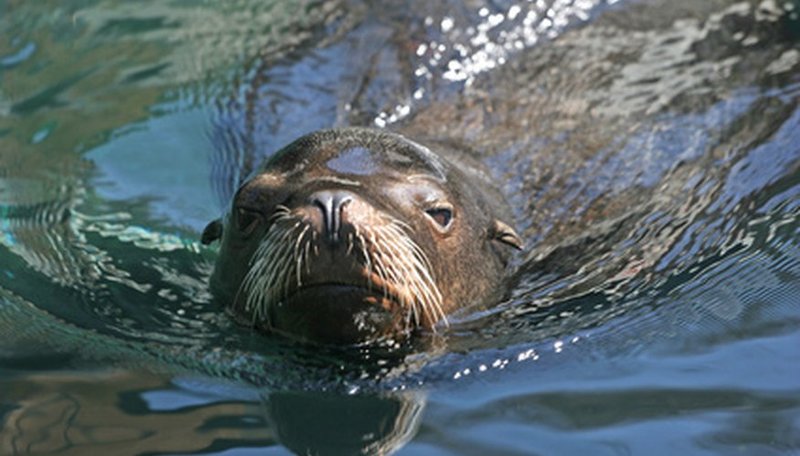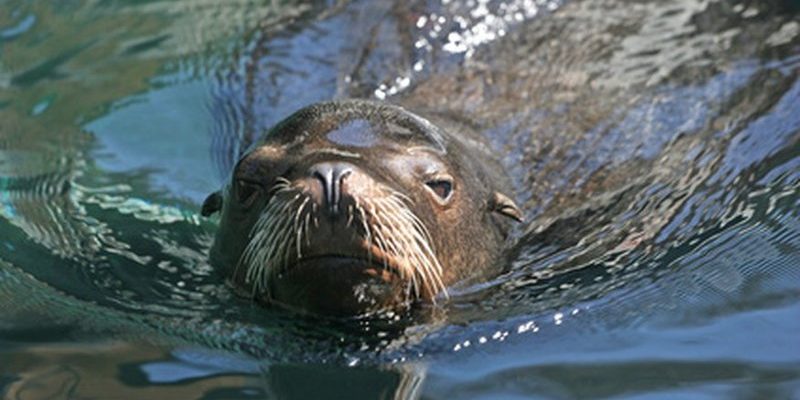
Their body isn’t just a random collection of parts. Every feature of a sea lion has evolved to give it a leg up on survival in the ocean’s depths. From their streamlined shape to their expert swimming techniques, each adaptation has a purpose. Let’s dive deeper into the incredible adaptations that help sea lions thrive underwater.
Streamlined Bodies for Efficient Swimming
One of the first things you’ll notice about a sea lion is its sleek body. Think of it like a perfectly designed torpedo that cuts through water with ease. The shape reduces drag, allowing them to swim faster and more efficiently. This streamlined form is crucial when they need to chase prey or evade predators.
Their flippers play a significant role in this. Unlike fish that use tails to propel themselves, sea lions use their front flippers for steering and propulsion. This gives them a unique advantage, allowing for sharp turns and quick bursts of speed when necessary. It’s almost like watching a well-coordinated ballet under the sea!
Plus, sea lions can rotate their hind flippers, helping them maneuver in tight spots. This flexibility allows them to navigate rocky shores and kelp forests with greater ease. You might wonder how they can perform acrobatic flips while swimming—this is all thanks to their well-adapted bodies.
Amazing Vision Underwater
You might think that having good vision is just a given for any animal. But underwater, it’s a game-changer. Sea lions have exceptional dichromatic vision, which means they can see colors differently than we do. Their eyes are specially adapted to focus in the water, allowing them to spot fish and other prey more effectively, even in dim light or murky conditions.
Here’s the thing: while humans have a much broader range of color perception, the sea lion’s vision helps it detect movement and contrast in their underwater world. This ability is crucial when hunting, as it allows them to identify prey hiding among rocks or seaweed.
Ever noticed how they seem to dart around with confidence? That’s because their eyes can adjust to various light conditions, enabling them to navigate from bright sunlight at the surface to darker depths without a hitch. This sharp vision is an essential part of their hunting toolkit.
Breath-Holding Abilities
If you’ve ever tried to hold your breath underwater, you know it can be a challenge. Sea lions, on the other hand, are masters at it. They can hold their breath for up to 20 minutes! How do they do that? Their bodies are built to conserve oxygen while submerged, which is key to their survival.
When they dive, their heart rate slows down significantly, allowing them to use less oxygen. This ability is called bradycardia. Think of it like turning off lights in your house to save energy—you’re using what you have more wisely. Along with that, sea lions have a high concentration of myoglobin in their muscles. Myoglobin helps store oxygen, giving these animals the stamina to hunt or evade danger while they’re underwater.
These adaptations let sea lions forage for food deeper and longer than many other marine animals, making them highly effective predators in their environment.
Insulating Fur for Temperature Regulation
Living in the ocean means dealing with a range of temperatures. While you might think that all marine animals have thick blubber for warmth, sea lions are a bit different. They have a thick layer of fur covering their bodies, which acts as insulation against cold waters.
This fur isn’t just for show; it plays a vital role in keeping them warm. The outer layer is waterproof, which helps keep the underlying layer of insulating fur dry. When they come back to the surface, they can shake off water and trap air in their fur, which adds an extra layer of insulation. It’s like wearing a stylish, functional wetsuit that keeps them cozy while they swim!
On top of that, they can regulate their body temperature by changing their behavior. If it’s hot, sea lions will bask in the sun to warm up, while during colder months, they can dive into deeper, warmer waters. This degree of control helps them thrive in varying conditions.
Social Structures and Communication
You might think sea lions are just solitary hunters, but in reality, they are highly social animals. They often gather in large groups known as colonies on beaches or rocky shores. This social structure is crucial for several reasons: protection from predators, help in raising pups, and even improving foraging success.
Sea lions communicate with each other using a range of vocalizations, body language, and even physical contact. Their barks, growls, and howls help them establish territory and keep track of their family members. Imagine being at a lively gathering where everyone is trying to talk over each other—this is exactly what a sea lion colony can sound like!
They also work together to find food more effectively. When hunting, sea lions may synchronize their dives, making it easier to corner schools of fish. It’s a team effort that reflects their intelligence and adaptability.
Powerful and Agile Swimmers
When it comes to swimming, sea lions are nothing short of impressive. Their powerful flippers not only aid in swimming but also allow them to leap gracefully out of the water. You might have seen videos of them performing acrobatic flips—this is all part of their natural behavior, used for both communication and hunting strategies.
Their agility underwater comes from a combination of strength and flexibility. They can make sharp turns and quick accelerations, allowing them to pursue or evade other marine creatures. This agility is critical during hunting, as they often have to chase fast-moving schools of fish.
Moreover, sea lions have been known to reach speeds up to 25 miles per hour for short bursts, which is quite fast for a marine mammal! It’s like watching a well-tuned sports car zoom past—you can’t help but be impressed by their design and capability.
The adaptations of sea lions showcase the incredible creativity of nature in helping species thrive in challenging environments. From their streamlined bodies and exceptional vision to their social structures and breath-holding abilities, each feature plays a role in their survival and success in the wild.
These adaptations not only help sea lions find food but also allow them to avoid predators, socialize, and reproduce—all essential aspects of their life underwater. So, the next time you see a sea lion, take a moment to appreciate just how well adapted they are to their marine home. Their unique traits are a true testament to the wonders of evolution in action!

